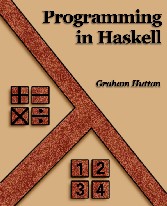In this pretty detailed tutorial, Jim Ursetto puts his Cocoa/Chicken bridge to work. Jim noticed that some of his music files were forgotten by iTunes, and wanted to reimport them without losing any metadata. His article
documents my attempt to do just that by building an application in Chicken Scheme, using the bindings to Objective-C and Cocoa provided by the objc egg. It’s targeted at the intermediate Scheme programmer, who may have some experience with Cocoa. It may also be useful to a beginner looking for examples of an interactive development process, and to a non-Scheme user for the same reason.
Jim has taken the time to document also the program’s design and coding processes, so you’ll not only learn about Cocoa or how to use the Scheme bridge, but also about property lists parsing, symlink creation or exception handling. In addtion, you will have the chance of looking over a fellow programmer shoulder having fun for a while.
 It’s a long read, but a very good one. And just in case you don’t get to the end, don’t miss Jim’s last recommended reading: a tutorial on the expressiveness and universality of fold, by Graham Hutton. Graham, by the way, happens to be a Haskell and functional programming erudite and professor, so you may be interested in his publications, including the forthcoming book Programming in Haskell, whose first five chapters are available in PDF here.
It’s a long read, but a very good one. And just in case you don’t get to the end, don’t miss Jim’s last recommended reading: a tutorial on the expressiveness and universality of fold, by Graham Hutton. Graham, by the way, happens to be a Haskell and functional programming erudite and professor, so you may be interested in his publications, including the forthcoming book Programming in Haskell, whose first five chapters are available in PDF here.





June 10, 2007 at 2:13 pm
Thank You